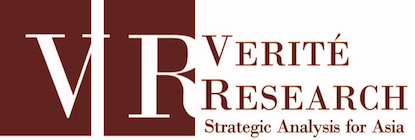Greater stake, greater say?
Sri Lanka is currently ranked 127 of 180 countries in Reporters without Border’s World Press Freedom Index. Political control over media ownership remains a major concern, and contributes towards this relatively low ranking. Our findings discuss the issue of political affiliations of the media, and ask how such affiliations might undermine impartiality and pluralism – in other words, how a greater political stake in ownership may translate into a greater say – within the Sri Lankan media. It examines the general risks associated with political affiliations, analyses the current legal framework, and illustrates the current picture in terms of the political affiliations of the media.
Is there a risk?
Media ownership has a significant bearing on media content, and thus, plays a crucial role in shaping public opinion. In the hands of politicians, the media could be used to serve their own interests through partial reporting, boosting their political mileage, and ridiculing rivals. Privately-owned media houses are no exception to this pattern, as they may be just as politically affiliated as state-run outlets, serving the vested interests of their owners and allies.
As an example, in 2017, the Head of the Information and Communication Technology Agency (ICTA) Muhunthan Canagey was reportedly asked to resign by the current President and did, after allegedly learning about a spectrum worth USD 25 million that had been provided to a private media organisation without an auction or tender process.
By contrast, owning shares or being related to the shareholder does not automatically result in partial content. This was evident when the Wijewardene Family’s newspaper, Daily Mirror, openly criticised the current Prime Minister, who is related to the family. Nevertheless, the proximity of media ownership, either directly to a Member of Parliament or via a parliamentarian’s family, poses a greater risk of partiality, and could enable such politicians to have a greater say through the media.
What does the law say?
Currently, there are no legal provisions preventing Members of Parliament or their family members from holdings shares in media organisations. Owners are also not obliged to declare their political affiliations or any conflicts of interests on the forms submitted to the Department of Registrar of Companies. In the absence of such legislation, political ownership of the media appears to be a technically ‘legal’ pattern within Sri Lanka’s media landscape.
Meanwhile, anyone can attempt to discover whether a Member of Parliament is financially affiliated to a media outlet under the Declaration of Assets and Liabilities Law No. 1 of 1975 for a payment of LKR 750 (USD 4.34). This law permits transparency into the assets, business interests or shares of Members of Parliament and their family members. However, there were several drawbacks in the law, such as article 7(4) and (5) which prevented the information from being publicly discussed. With the Right To Information (RTI), however, this information can still be obtained and openly discussed.
What’s the current situation?
Political affiliations in ownership can manifest in several more or less tight forms ranging from (a) direct ownership of media organisations by the state or former/current Members of Parliament, (b) ownership of media organisations through their family members, to (c) the inclination of private media organisations towards certain political parties or candidates. Since it is often difficult to ascertain and verify political affiliations in category (c), the Media Ownership Monitor (MOM) team applied categories (a) and (b) to the 46 outlets studied. This however does not assume that political affiliations according to category (c) do not exist. The findings are listed under each respective media sector.
- Print – 7 out of 12 print outlets covered fall under category (a). Meanwhile, 2 out of 12 print outlets fall under category (b).
- Radio – 1 radio outlet out of 11 falls under category (a), where 5 outlets fall under category (b). This is more than half of the outlets which is politically affiliated.
- Television – 4 out of 12 television outlets fall under category (a), whereas 2 outlets fall under category (b). As a result, half of the major broadcasters are directly owned by the state, by politicians or their families.
- Online – 4 out of 11 online outlets fall under category (a), whereas 2 outlets fall under category (b). However, valid information of 2 outlets – Lanka C News and Gossip Lanka News – was not available. Nevertheless, as explained in the profile of Lanka C News, academia and news reports point to the outlet being affiliated to the Leader of the National Freedom Front, Wimal Weerawansa. (see profile of Lanka C News)
While MOM only investigated 46 media outlets with the widest reach based on audience share, the numbers and ratios of media outlets controlled by politically affiliated entities are possibly higher in each sector, requiring further scrutiny and, above all, a public debate about the risks related to the political affiliations of mass media. These findings point to a major public priority: the proximity of media ownership to politicians requires greater public scrutiny, given its potential to undermine pluralism and impartiality within the Sri Lankan media.



